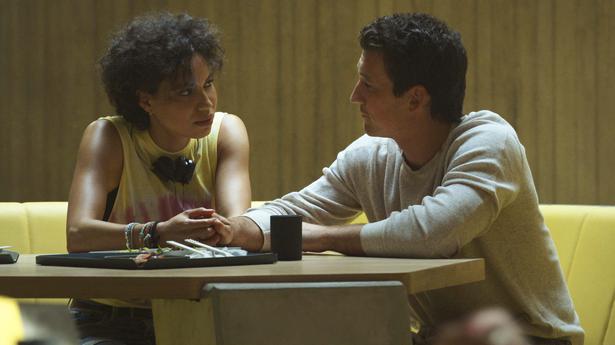Visitors at the newly opened Museum of Art & Photography (MAP), city’s first major private museum balancing heritage, traditional art and technology, on Kasturba road in Bengaluru on February 18, 2023.
| Photo Credit: MURALI KUMAR K
The Museum of Art and Photography (MAP), the first major private museum in Bengaluru, opened its doors at Kasturba Road with the inaugural series, ‘Art is Life: New Beginnings’. In view of the launch, the museum is holding week-long events from February 18-24.
Supported by cutting-edge technology, the museum has been constructed on the pillars of an innovative digital format that was introduced in 2020. This entails virtual exhibits, artist lectures, virtual reality encounters and a number of keynote discussions with leading museum directors from across the world that focus on the collections.

MAP is Bengaluru’s first major private museum balancing heritage, traditional art and technology, on Kasturba road in Bengaluru on February 18, 2023.
| Photo Credit:
MURALI KUMAR K
Digital interventions, such as the Sasken Multimedia Gallery, enhance the museum experience for MAP’s visitors and make the whole collection accessible even when individual pieces aren’t on show.
Four exhibitions
The brand-new series feature four exhibitions and a series of new commissions. Curated by the director of MAP, Kamini Sawhney, ‘Visible/Invisible’ includes works by leading Indian artists such as Jamini Roy, Bhupen Khakhar, Mrinalini Mukherjee, Ravinder Reddy, Arpita Singh, M.F. Hussain and examines the role of women in art.

The brand-new series feature four exhibitions and a series of new commissions.
| Photo Credit:
MURALI KUMAR K
With more than 160 images, renowned Indian artist Jyoti Bhatt’s collection “Time and Time Again” traces his path as a photographer in the second half of the 20th century. The installation highlights his experimentation with multiple exposures and fragmented mirror imagery, as well as his depiction of rural villages, portraits of other artists, and self-portraits.
The MAP also feature LN Tallur’s series of sculptures and movies called “Chirag-e-Al,” which explore the link between artificial intelligence and ritualistic belief systems while forcing viewers to consider humanity’s increasing reliance on technology. The themes of darkness, conversations between celestial entities, and white spaces are established via the use of imagined chatbots, neural networks, composite figures, and white spaces.
Three years of research-backed work
Speaking about what makes MAP so distinct, Ms. Sawhney said, “MAPs collections are spread over six categories — premodern, modern and contemporary, textiles, photography, indigenous art, and popular culture such as Bollywood posters and film scripts. It tells the stories of all communities that make up India. We tell much wider stories as compared to other museums. Visible/Invisible showcases the permanent collection of MAP but we also commissioned various artists to create work which became part of the works. We worked for three years on this exhibition and it is accompanied by a catalogue.”

MAPs collections are spread over six categories — premodern, modern and contemporary, textiles, photography, indigenous art, and popular culture such as Bollywood posters and film scripts.
| Photo Credit:
MURALI KUMAR K
The MAP started first as a digital museum. “We developed the concept of MAP Labs which looks at the intersection of the science and the arts and how we can use technology to find art solutions. In our first collaboration with Accenture, we came up with the idea of creating a 3D persona or a hologram of M.F. Hussain, an iconic artist with whom a lot of young people have not interacted. It enabled them to have a chat with M.F. Hussain and understand his work,” Ms. Sawhney said.






